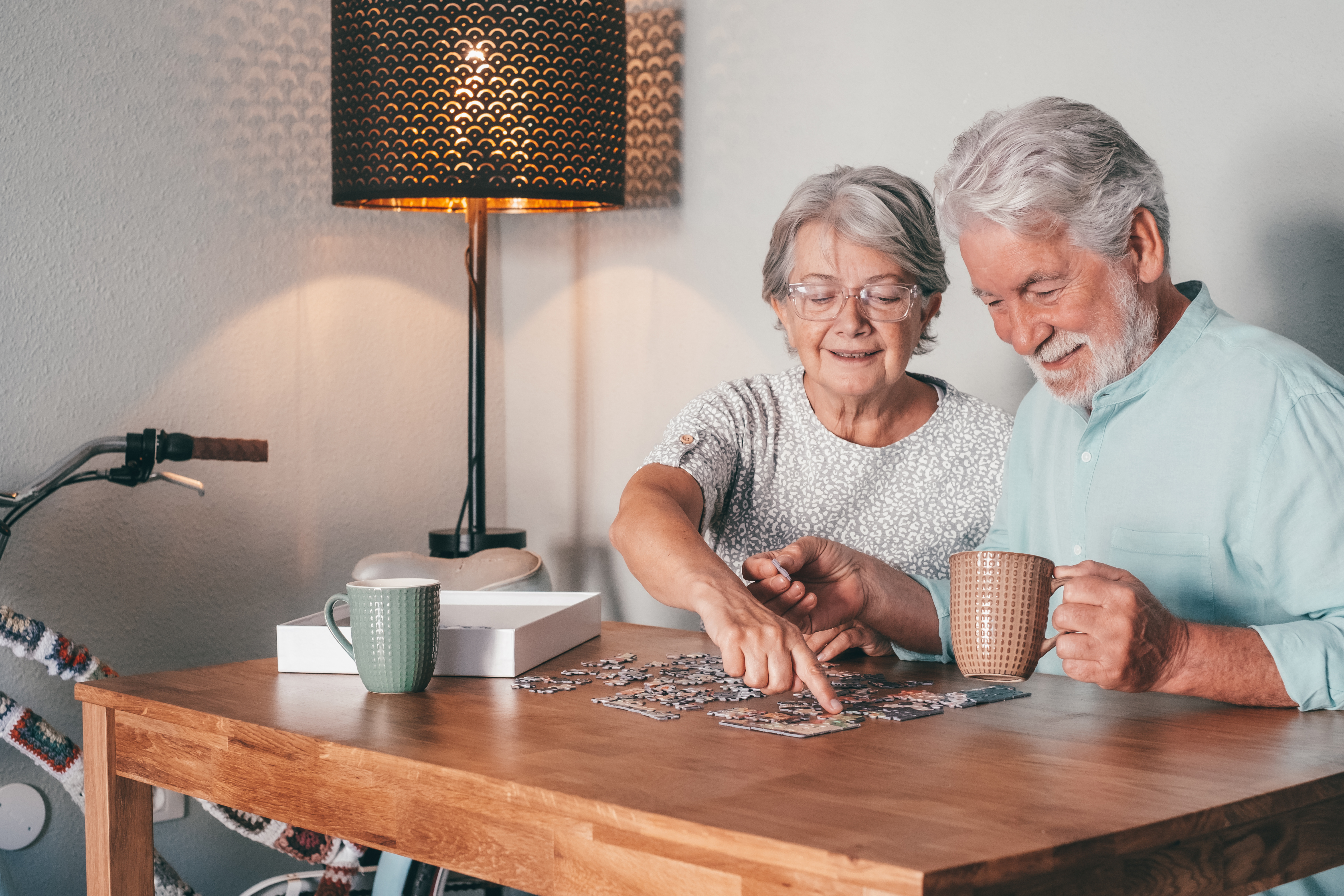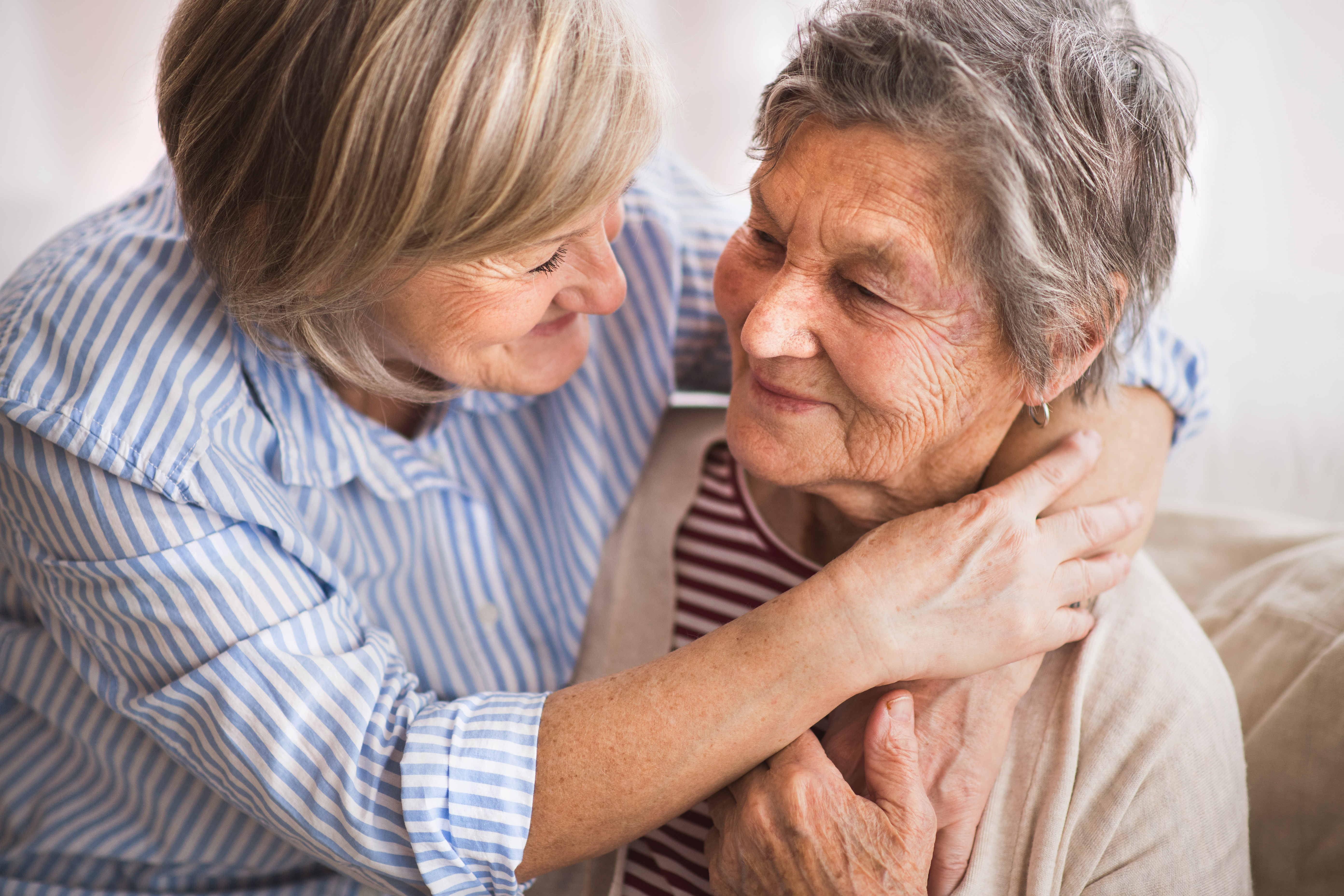Engaging activities after a stroke

Although they may be recovering after a stroke, that doesn’t mean your loved one has to give up the things they enjoy. In fact, meaningful activities can play a big role in healing. From physical exercise to cognitive games and creative hobbies, these activities support brain health, mobility, and emotional wellness. Whether it’s walking in the park, doing a puzzle, or enjoying music with a loved one, each activity is an opportunity to rebuild skills, boost confidence, and reclaim moments that matter.
Recovering from a stroke brings a new rhythm to daily life, but it doesn’t mean your loved one has to give up the things they enjoy. Finding activities that spark joy and engagement can be a powerful part of healing.
A new exercise routine or fun board game can help support brain health, build confidence, and remind your loved one that there’s still so much to experience and celebrate.
Simple, thoughtful activities can support brain health, boost cognitive function, improve mood, and help rebuild self-confidence while also adding moments of joy to the journey.
Why is staying active after a stroke important?
Since a stroke can cause temporary or permanent damage to the brain, it’s important to keep your brain and your body active during recovery. An active mind and body can boost the rehabilitation process by:1
Promoting brain health – Since a stroke impacts the brain, mental stimulation is a vital part of recovery. By adding cognitive exercises to your loved one’s routine, you’re helping them rebuild skills that may have been affected. These activities aren’t just “brain games,” they support neuroplasticity, the brain’s natural ability to heal, adapt, and form new connections over time.
Regaining muscular abilities – A stroke can change how your loved one moves, making physical activity more challenging. As a caregiver, you can make a big difference by encouraging gentle, regular movements. Exercise helps prevent muscle loss, supports mobility, and builds strength over time. Most importantly, it can boost your loved one’s confidence and sense of independence as they continue their recovery journey.
Improving cardiovascular health – Physical activities strengthen the heart and improve circulation — and strong circulation can reduce the risk of future strokes.
Enhancing mental wellness – Brain-stimulating activities and physical exercise may play a role in improving mental health. Movement, hobbies, and games may reduce stress and anxiety while helping your loved one gain confidence in their abilities.
Preventing future episodes – Physical and mental activities can prevent future strokes, reduce the risk of falling, and even decrease the risk of developing heart conditions.2
Activities for strength and mobility
Easing back into physical activity after a stroke requires time and patience, but even small steps can help engage both the body and mind. Early on, your loved one may receive physical and occupational therapy from professionals who teach the basics of mobility assistance. As a caregiver, your support in encouraging these activities of daily living at home can make a big difference in their progress and confidence as they regain strength.
However, you can continue the recovery care process at home with additional activities such as:3
Stretching and range-of-motion exercises – Tai chi, dance, calisthenics, and Pilates
Gait training – Marching in place, heel-to-toe walking, and side stepping
Aerobics – Stationary bikes, water aerobics, brisk walking, and hula hooping
Strength training – Resistance bands, weight training, tai chi, Pilates, and yoga
Generally, start with easier tasks and increase intensity and time with further progression. Always consult a professional before beginning an exercise program, as they can help you develop a plan for your loved one’s specific stroke recovery.
Cognitive activities for stroke recovery
Keeping your loved one’s mind engaged is just as important as physical activity in their recovery after a stroke. The good news is many cognitive exercises can be done right at home with everyday items you likely already have in your cabinet.
Your loved one’s speech or occupational therapists can provide personalized recommendations for cognitive activities. But if you're looking for some ideas to get started, here are a few you can try together.
Board and card games
Board and card games are an easy and accessible way to boost brain activity. Depending on the type of daily living activity after a stroke, your loved one might find themselves practicing skills like problem-solving, organization, concentration, and information retention3 — all while having fun and enjoying a game with family and friends.
Here are a few games to consider:
Connect Four
Jenga
Boggle
Mahjong
Scrabble
Battleship
Checkers
Clue
Trivia
Chess
Scattergories
Plus, playing with family or friends allows your loved one to practice socialization skills (it’s a muscle that needs regular exercise, too).
Puzzles
Spending time putting together a jigsaw puzzle is another beneficial way to use cognitive skills. Puzzles are great for solitary practice or social engagement and pack a ton of brain work, including:
Hand-eye coordination
Critical thinking
Short-term memory
Problem-solving skills
Of course, once your loved one completes the puzzle, you both can enjoy a sense of accomplishment that boosts self-confidence and shows how capable they are in their care journey.
Honorable mentions
Some brain-boosting activities that anyone can do with good old pen and paper are:
Sudoku
Crossword puzzles
Word searches
Journaling
Poetry writing
Creative and leisure activities
Creative and leisure activities are another way to practice skills and enhance emotional well-being after a stroke. From artistic endeavors to getting outdoors, there are plenty of ways to express creativity or savor a peaceful moment.
Hands-on hobbies
Many art and craft-type projects benefit your brain and body, especially for post-stroke recovery. These hobbies can enhance hand-eye coordination and motor skills and assist with creative expression.4
Whether you or the stroke survivor has always been creative or has never held a paintbrush, these activities are fun, relaxing, and engaging:
Watercolor or finger painting
Coloring in a coloring book
Clay modeling
Scrapbooking
Jewelry making
Knitting or crocheting
Calligraphy
Photography walks
You don’t need to be an expert to help your loved one try these activities. And if something doesn’t seem enjoyable or feels too challenging, that’s OK. Simply move on and try something new until you find what works best for them, allowing both the mind and body to stay engaged in a way that feels comfortable and rewarding.
Reading
Reading is a wonderful way to keep your loved one’s brain active, while also offering a chance to practice language skills and enjoy a little escape. Whether they revisit a familiar favorite, dive into something new, or even try reading aloud to help with speech, it’s a great way to stay engaged.
If fiction isn’t their thing, consider magazines about topics they enjoy — such as cooking, gardening, fashion, or nature. Audiobooks are another great option, offering an enjoyable way to keep the mind active, especially for those with visual difficulties.
Recreational activities
Looking for more leisure activities to support your loved one’s recovery after a stroke? Try these recreational activities while combating negative stroke emotional effects:
Music – Listening to music and singing or dancing along with it can help exercise memory, motor skills, and emotional processing.5 Learning an instrument, like drums or tambourines, could even take these benefits a step further.
Outdoor recreation – Spending time outdoors can be a wonderfully relaxing and beneficial activity in post-stroke recovery. Whether it’s a peaceful stroll through the park, bird-watching, or simply enjoying a walk, there are no wrong choices when your loved one is surrounded by nature’s calming and healing effects.
Your loved one may also have other interests beyond the activities listed here, many of which can offer similar benefits. Perhaps they’re interested in learning to cook, exploring photography, or playing video games. Be sure to connect with their caregiving team for personalized guidance on activities that can support their individual recovery journey.
How to create a daily routine
So, we know engaging tasks are an essential part of recovery, but how do you fit them into your loved one’s routine? We know it may seem a little daunting at first — after all, how do you know what to do and when, let alone how often?
One of the easiest ways to build a post-stroke routine with engaging activities is to turn them into habits. You can help your loved one build a routine by choosing set days and times for each activity.6 For example, you might play an album at home every Monday, Wednesday, and Friday from 3 pm to 3:30 pm. Then, have them knit or read a book on Tuesdays and Thursdays from 3 pm to 3:30 pm.
To help you remember, try using a physical or digital calendar to schedule hobbies, social activities, and exercise.
Connecting through meaningful activities
Your loved one is still the same person with values, preferences, and goals. A stroke doesn’t define them. While some aspects of life may have changed, their identity, interests, and the things that bring them comfort and happiness are still very much a part of who they are.
One powerful way to support your loved one after a stroke is by talking with them about the activities they used to enjoy—and exploring which of those are still possible in some form. Whether it's gardening, listening to music, painting, cooking, or simply spending time in nature, many activities can be adapted to meet your loved one’s current abilities.
By centering their voice in these decisions and celebrating what’s still possible, you’re helping them maintain a sense of purpose and connection. This isn't the end of the road—it's a new chapter, and there’s still plenty of room for fulfillment and discovery.
Read our comprehensive guide on stroke caregiving
Get more tips on how to care for someone after a stroke with our guide.








Social activities
Social interaction is a vital part of recovery after a stroke. Even if your loved one feels different or worries that their new health concerns may be a burden to others, staying socially engaged can have a powerful, positive impact on their mental well-being. As a caregiver, helping facilitate these connections—whether through family visits, joining a support group, or even virtual check-ins—can provide emotional comfort and boost their overall recovery.
Types of social activities worth trying include:
Family gatherings
Support groups
Friend meetups
Special interest groups
Local or community events
Volunteering
Socializing helps your loved one practice language skills and can play a key role in emotional regulation. Engaging with others allows them to feel validated, needed, and supported, which can be incredibly reassuring during recovery. As a caregiver, encouraging these social moments can help strengthen their sense of connection and well-being.